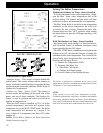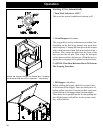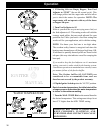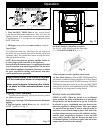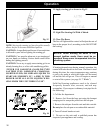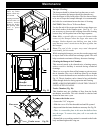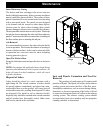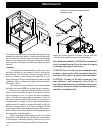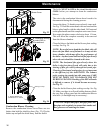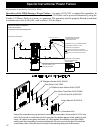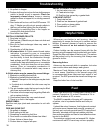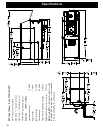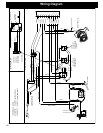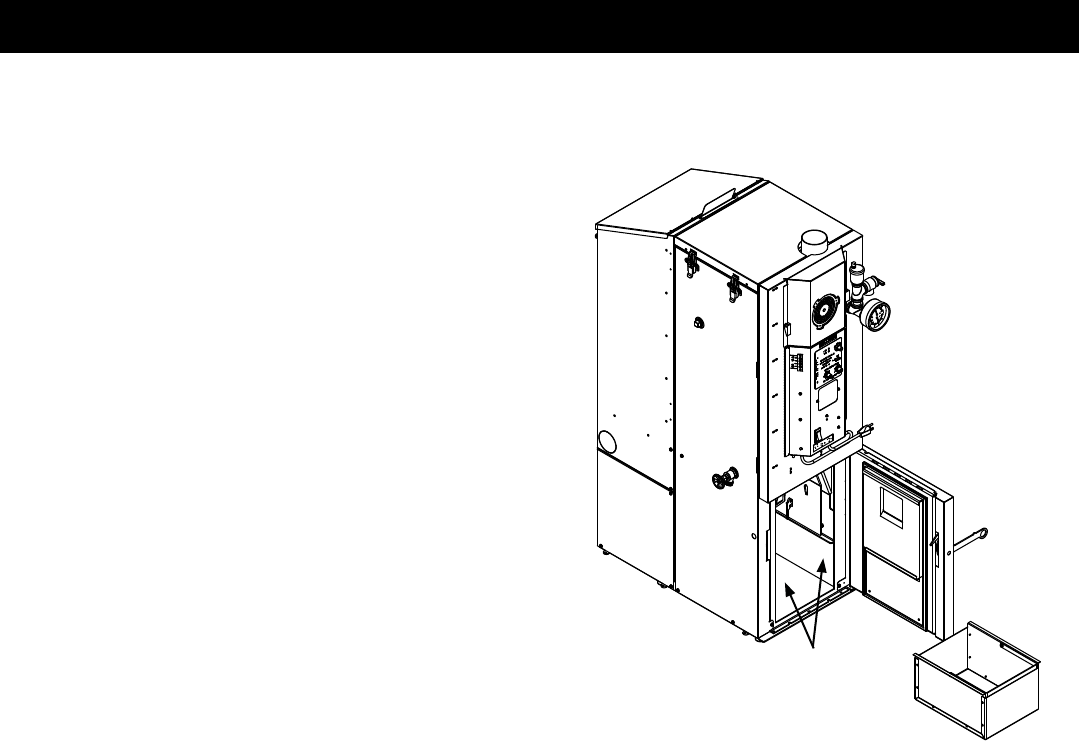
34
Soot and Flyash: Formation and Need for
Removal
The products of combustion will contain small
particles of yash. The yash will collect in the exhaust
venting system and restrict the ow of the ue gases.
Incomplete combustion, such as occurs during startup,
shutdown, or incorrect operation of the boiler will lead
to some soot formation which will collect in the exhaust
venting system. The exhaust venting system should
be inspected at least twice monthly until an apropriate
cleaning schedule is determined.
Inner Refractory Lining
The rebox and heat exchanger tube access areas are
lined with high-temperature, brous ceramic insulation
panels (much like spacecraft tiles). The surface of these
panels is hardened to resist normal wear from brushing
with a non-metal brush. The panels are not designed
to be cleaned with the scraper or other sharp objects.
Caution must be taken when cleaning these panels
because damage to them is not covered by the warranty.
The ash pan slides into the unit on a rail system. This keeps
the ash pan from contacting the sides and oor refractory
panels. Caution must be taken to ensure there is nothing on
the oor surface prior to inserting the ash pan.
Ash Removal
It is recommended to remove the ashes when the boiler
is not in operation. This lessens the chances of coming in
contact with hot surfaces. Ashes can be removed while
in operation but, extra care must be taken including
wearing protective gloves.
Open The Firebox Door
Swing the latch downward and open the door as shown in
g. 21.
NOTE: Keep hopper lid, and rebox door closed during
operation and maintain all seals in good condition. Air
leaks will cause low draft conditions, which will result
in feeder shutdown.
Disposal of Ashes:
Ashes should be placed in a steel container with a
tight tting lid. The closed container of ashes should
be moved outdoors immediately and placed on a non-
combustible oor or on the ground, well away from all
combustible materials, pending nal disposal. If ashes
are disposed of by burial in soil or otherwise locally
dispersed, they should be retained in the closed container
until all cinders have thoroughly cooled. Other waste
shall not be placed in this container.
Fig. 21
Firebox Refractory
Linings




